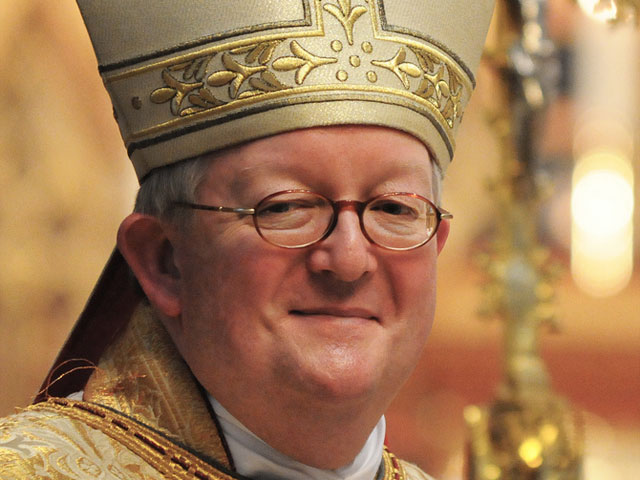Few subjects inspire the whole “National Geographic visits the strange natives” school of Godbeat journalism quicker than monasticism.
This is especially true when journalists attempt to write about a place as genuinely strange, in a good sense of the word, and other worldly as Mount Athos, the stunningly beautiful peninsula in northeastern Greece that the Orthodox call “the holy mountain.”
The key to writing about Mount Athos is to get all of the facts right, especially when dealing with issues of worship and history, and then to let the monks and pilgrims speak for themselves. If you report the colorful details with precision, one does not have to try to make the holy mountain sound other worldly and different. It’s going to sound holy and different, with all of the facts presented in a dry and dispassionate manner. Period.
Get the basics right and a story about Mount Athos will pretty much write itself. As you would imagine, I would love to take a shot at that task myself, someday.
This leads me to a recent Reuters piece that is, in many ways, a perfect example of how NOT to write about the holy mountain. In this case, the journalistic goal is to somehow lead the story with the Greek financial crisis and its impact on the number of pilgrims heading to Mount Athos in order to escape, well, reality. Thus, the story opens in this manner:
Mount Athos, a self-governed peninsula in northeastern Greece, has been attracting pilgrims to its Orthodox monasteries for centuries. But the debt crisis has led to a sharp rise in the number of guests seeking calm and solace there. Women still aren’t welcome, though.
Mornings on the sacred mountain begin with loud blows. A monk stands in front of the monastery church of Agiou Andrea and hammers a block of wood. The medieval percussion instrument, called a simantron, is the wakeup call for the first religious service of the day. Several black-clad, bearded men scurry across the courtyard. It is 4 a.m. and pitch-black, and the air is filled with the sound of cicadas.
In a few minutes, the oil lamps will be lit in Agiou Andrea, one of 12 “sketes,” or monastic communities, on Mount Athos. There’s not a single empty space in the choir benches. Sitting behind the singing, rhythmically chanting monks are pilgrims from Greece, Russia and Romania. They have slept a few hours on spartan beds, gone without electricity and warm water, and spent the night swatting at mosquitoes.
The fact that male monastics have, for centuries, banned women from the peninsula is a fact that — whether this commandment is printed in a newsroom’s stylebook or not — must be mentioned in the first paragraph or two. That’s OK. The Orthodox are used to that.
However, it’s clear that the lead reporter on this feature got a bit mixed up when studying the map of the holy mountain. There are plenty of “sketes” on the peninsula (definition here), but the key is that its monastic traditions center on 20, not 12, full-fledged monasteries that represent the whole Eastern Orthodox world, not just Greek Orthodoxy. That’s a pretty basic fact to get wrong and, frankly, Orthodox readers are going to rather skeptical about the article from that point on.
It does feature some nice, candid quotes from “guests.”
“I am here to wash myself clean of my sins,” says Ilie, a young Romanian who lives in Germany. “Here, we are closer to heaven than anywhere else.” Nikos, a Greek businessman, has come to the monastery to find himself. “To simply turn off, meditate and forget the material world,” he says.
Raise your hands if you would be interested in knowing more about why young men from various corners of post-Soviet nations and the largely post-Christian lands of Europe keep on coming to Mount Athos (and why some of them choose to stay there)? That strikes me as an interesting subject and one I have not seen in news print, in recent years.
Meanwhile, this report returns once again to the familiar issue of monks clashing with the European Union over, yes, women.
Legend has it that the Virgin Mary landed here on her way to Cyprus and was overcome by its beauty. God then gave her the mountain on it as a gift. And since the “Garden of the Virgin Mary,” as the place is known, is devoted to only the “purest of all women,” other women are not allowed in. At least that is the reason given by the monks who have ruled Athos as an autonomous monastic republic since the 10th century. Not even female animals are allowed on Athos, except cats.
Whenever European Union officials argue that the ban should be lifted, the monks point to a Byzantine document over 1,000 years old that promises them eternal sovereignty over Mount Athos. The men there take no orders from the outside world — especially not from the EU. The monks live in another era. …
It is this defiant renunciation of the outside world that fascinates many pilgrims. But recently it hasn’t just been the pious who are coming. Many Greeks have discovered Athos as a place where they can forget about the crisis.
And so forth and so on. Business as usual.
So what is this article actually about? I cannot tell, to be honest. It has fragments of travelogue color, mixed with politics, mixed with just a dash of snark. And what is life on the holy mountain all about? Why do the monks pray and pray and pray? That is old news, I guess.
Read the article, if you must. Tell me if you can figure out why it was written.











